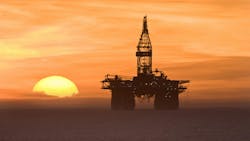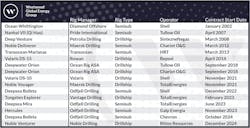Deepwater exploration drilling close to resuming offshore Namibia
Exploration of Namibia’s Upper and Lower Cretaceous plays in the offshore Orange Basin have delivered nearly 5 Bbbl from nine wells since 2022, according to Westwood Global Energy Group.
The seven exploration wells that followed up the Graff and Venus play opening discoveries have resulted in four follow-on discoveries with an estimated recoverable oil resource of 2.8 Bbbl, said Teresa Wilkie, director of Westwood’s RigLogix service.
This includes Galp Energia’s Mopane discoveries earlier this year. If the estimated 2.4 Bbbl is confirmed, it would be the largest oil discovery in sub-Saharan Africa and the third largest globally over the last decade.
However, demand for deepwater rigs has risen since 2022 driven by the breakthrough wells. Although no rigs are working offshore Namibia, various new programs should start in the next few months.

